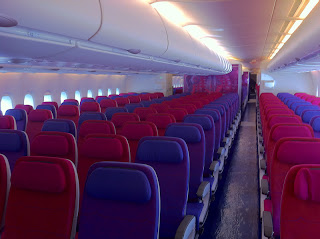If a few days ago I presented some cases of airports in challenging locations (all of them in islands where flat terrain is scarce or non-existent), this week I had the chance to visit an airport whose location is also a bit "complicated", I am referring to Gibraltar International airport.
Although not an island, land is certainly scarce in Gibraltar to the point that the current airport is partly built on land reclaimed from the sea. By the way, a strip of land that Spain claims, as, apparently, it was not included in the original treaty that ceded Gibraltar to the UK in perpetuity. This claim, that is, obviously, rejected by Britain, is at the origin of a seemingly endless dispute that has, at times, constrained the use of the airport and prevented the development of its full potential.
Gibraltar International Airport as seen from the North face of the Rock
Gibraltar's old WWII airfield was expanded on land reclaimed to the sea in order to be able to operate with modern passenger jets
But as this is an aviation blog, I will leave the political issues aside on this post...
I must say I was positively impressed by the airports brand-new terminal, maybe because of the low volume of traffic that makes it look a bit oversized, but there is a minimalist feel that is quite useful in preventing pre-flight stress.
Another plus is that the views from the terminal are simply amazing, with the Rock dominating the landscape. The architects that designed the terminal have make it easy to enjoy this magnificent view by adding an outdoor terrace on the South side of the terminal (unfortunately, the fact that the airport only gets a handful of flights a day means that it is far from ideal for planspotters!)
A note on the side: I also enjoyed a lot the decoration at the (only) airport bar, with great aviation-themed vintage posters!
But the most unusual feature of the airport is that the runway crosses the only access road into Gibraltar, which means that, both, cars and pedestrians alike need to cross it to get in and out of the territory!
How often do you see an old lady with shopping cart crossing an airport runway?
Only in Gibraltar!








































